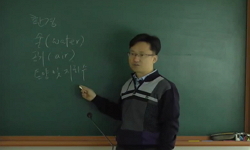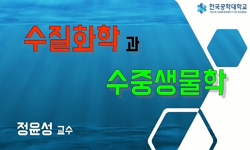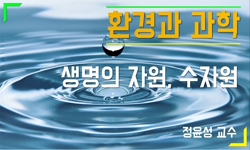치과치료를 위해 다양한 용도로 DCU에서 배출되는 물이 사용된다. 이 DCU 물의 질에 관한 계속되는 논란으로 인한 환자들의 불안감을 줄이고 양질의 치과 치료를 제공하기 위해서는 DCU 물이 ...
http://chineseinput.net/에서 pinyin(병음)방식으로 중국어를 변환할 수 있습니다.
변환된 중국어를 복사하여 사용하시면 됩니다.
- 中文 을 입력하시려면 zhongwen을 입력하시고 space를누르시면됩니다.
- 北京 을 입력하시려면 beijing을 입력하시고 space를 누르시면 됩니다.

치과용 유니트 수계의 미생물 오염 및 효과적인 관리 방법 = The Microbial Contamination and Effective Control Method of Dental Unit Water System
한글로보기https://www.riss.kr/link?id=A100767726
- 저자
- 발행기관
- 학술지명
- 권호사항
-
발행연도
2015
-
작성언어
-
- 주제어
-
KDC
500
-
등재정보
KCI등재
-
자료형태
학술저널
-
수록면
383-392(10쪽)
-
KCI 피인용횟수
2
- 제공처
-
0
상세조회 -
0
다운로드
부가정보
국문 초록 (Abstract)
치과치료를 위해 다양한 용도로 DCU에서 배출되는 물이 사용된다. 이 DCU 물의 질에 관한 계속되는 논란으로 인한 환자들의 불안감을 줄이고 양질의 치과 치료를 제공하기 위해서는 DCU 물이 음용수만큼 깨끗하게 유지되어야 한다. 따라서 본 논문은 DCU 물의 세균 오염 수준과 오염된 DCU물의 임상적 위험성에 대하여 설명하고, 세균 오염을 방지하기 위한 여러 가지 관리 방법들을 검토하였다. 여러 국가에서 DCU 물을 대상으로 오염도를 확인하는 연구가 많이 진행되어 DCU 물이 높은 수준으로 오염되어있다는 것이 입증되었다. 오염된 DCU 물로 인해 감염된 일부 사례도 보고되었고 이는 DCU 물이 감염의 잠재적인 원인일 수 있음을 보여주었다. DCU 물로 인한 잠재적 감염의 위험성을 줄이기 위해서는 효율적인 소독방법을 사용하고 자체적인 모니터링 또한 시행되어야 한다. 하지만 제안되고 있는 여러 가지 수관관리 소독방법으로 인해 치과종사자들의 혼란이 야기되고 있으며, 효율적인 소독방법을 보편화하기 위해서는 관련 연구가 더 진행되어야 할 것으로 생각된다. 치과치료를 받는 환자들을 안심시킬 수 있는 좋은 치과서비스를 제공하기 위해서는 정책적인 개선과 국내 치과 상황에 맞는 수관 관리 지침이 빠른 시일 내에 시행되어야 할 것으로 생각된다.
다국어 초록 (Multilingual Abstract)
Dental chair unit (DCU) is the most essential equipment for the dental treatment in dentistry. DCU output water is used for various applications during dental treatment. DCU output water must be clean at the same level as drinking water since patients...
Dental chair unit (DCU) is the most essential equipment for the dental treatment in dentistry. DCU output water is used for various applications during dental treatment. DCU output water must be clean at the same level as drinking water since patients and dental staff are regularly exposed to water and aerosols generated from the DCU. Many studies demonstrated that DCU output water is frequently contaminated with microorganisms including opportunistic pathogen such as Legionella and Pseudomonas species. Thus, DCU output water may be a potential source of infection. In order to reduce microbial contamination levels in DCU output water, periodic management and continuous disinfection are necessary. Currently, there are a variety of disinfection methods for managing DCU output water and its efficacy is also diverse. We reviewed the level of microbial contamination, clinical implications of contaminated DCU output water and the various DCU disinfection methods.
참고문헌 (Reference)
1 윤혜영, "치과대학 임상 시뮬레이션 실습실 치과용 유니트 수계의 세균 오염도 조사" 한국치위생과학회 15 (15): 232-237, 2015
2 Oppenheim BA, "Widespread Legionella pneumophila contamination of dental stations in a dental school without apparent human infection" 99 : 159-166, 1987
3 Smith AJ, "Use of chlorine dioxide to disinfect dental unit waterlines" 49 : 285-288, 2001
4 Martin MV, "The significance of the bacterial contamination of dental unit water systems" 163 : 152-154, 1987
5 Al-Hiyasat AS, "The presence of Pseudomonas aeruginosa in the dental unit waterline systems of teaching clinics." 5 : 36-44, 2007
6 Rice EW, "Standard methods for the examination of water and wastewater" American Public Health Association 2012
7 Ryan MP, "Sphingomonas paucimobilis: a persistent gram-negative nosocomial infectious organism" 75 : 153-157, 2010
8 Kettering JD, "Reducing bacterial counts in dental unit waterlines:Distilled water vs. antimicrobial agents" 30 : 735-741, 2002
9 Fotos PG, "Prevalence of legionella-specific IgG and IgM antibody in a dental clinic population." 64 : 1382-1385, 1985
10 Briancesco R, "Non-tuberculous mycobacteria and microbial populations in drinking water distribution systems" 46 : 254-258, 2010
1 윤혜영, "치과대학 임상 시뮬레이션 실습실 치과용 유니트 수계의 세균 오염도 조사" 한국치위생과학회 15 (15): 232-237, 2015
2 Oppenheim BA, "Widespread Legionella pneumophila contamination of dental stations in a dental school without apparent human infection" 99 : 159-166, 1987
3 Smith AJ, "Use of chlorine dioxide to disinfect dental unit waterlines" 49 : 285-288, 2001
4 Martin MV, "The significance of the bacterial contamination of dental unit water systems" 163 : 152-154, 1987
5 Al-Hiyasat AS, "The presence of Pseudomonas aeruginosa in the dental unit waterline systems of teaching clinics." 5 : 36-44, 2007
6 Rice EW, "Standard methods for the examination of water and wastewater" American Public Health Association 2012
7 Ryan MP, "Sphingomonas paucimobilis: a persistent gram-negative nosocomial infectious organism" 75 : 153-157, 2010
8 Kettering JD, "Reducing bacterial counts in dental unit waterlines:Distilled water vs. antimicrobial agents" 30 : 735-741, 2002
9 Fotos PG, "Prevalence of legionella-specific IgG and IgM antibody in a dental clinic population." 64 : 1382-1385, 1985
10 Briancesco R, "Non-tuberculous mycobacteria and microbial populations in drinking water distribution systems" 46 : 254-258, 2010
11 Jackson RW, "Multiregional evaluation of the SimPlate heterotrophic plate count method compared to the standard plate count agar pour plate method in water" 66 : 453-454, 2000
12 Barbeau J, "Multiparametric analysis of waterline contamination in dental units" 62 : 3954-3959, 1996
13 Walker JT, "Microbiological evaluation of dental unit water systems in general dental practice in europe" 112 : 412-418, 2004
14 Walker JT, "Microbiological evaluation of a range of disinfectant products to control mixed-species biofilm contamination in a laboratory model of a dental unit water system" 69 : 3327-3332, 2003
15 Uzel A, "Microbiological evaluation and antibiotic susceptibility of dental unit water systems in general dental practice." 6 : 43-47, 2008
16 Santiago JI, "Microbial contamination of dental unit waterlines:short- and long-term effects of flushing" 42 : 528-535, 1994
17 Pankhurst CL, "Microbial contamination of dental unit waterlines: the scientific argument" 48 : 359-368, 1998
18 Williams JF, "Microbial contamination of dental unit waterlines: origins and characteristics" 17 : 538-540, 542, 1996
19 Williams JF, "Microbial contamination of dental unit waterlines: Prevalence, intensity and microbiological characteristics" 124 : 59-65, 1993
20 Szymanska J, "Microbial contamination of dental unit waterlines" 15 : 173-179, 2008
21 Davey ME, "Microbial biofilms: From ecology to molecular genetics" 64 : 847-867, 2000
22 Walker JT, "Microbial biofilm formation in DUWS and their control using disinfectants" 35 : 721-730, 2007
23 Walker JT, "Microbial biofilm formation and contamination of dental-unit water systems in general dental practice." 66 : 3363-3367, 2000
24 Fernandez M, "Methylobacterium mesophilica as a cause of persistent bacteremia in a child with lymphoma" 16 : 1007-1008, 1997
25 Gomez-Alvarez V, "Metagenomic analyses of drinking water receiving different disinfection treatments" 78 : 6095-6102, 2012
26 Schmeisser C, "Metagenome survey of biofilms in drinking-water networks" 69 : 7298-7309, 2003
27 Bartoloni JA, "Measuring the validity of two in-office water test kits" 137 : 363-371, 2006
28 O'Donnell MJ, "Management of dental unit waterline biofilms in the 21st century" 6 : 1209-1226, 2011
29 Ma'ayeh SY, "Legionella pneumophila contamination of a dental unit water line system in a dental teaching centre" 6 : 48-55, 2008
30 Atlas RM, "Legionella contamination of dental-unit waters" 61 : 1208-1213, 1995
31 Porteous NB, "Isolation of non-tuberculosis mycobacteria in treated dental unit waterlines" 98 : 40-44, 2004
32 Yabune T, "Inhibitory effect of PVDF tubes on biofilm formation in dental unit waterlines" 21 : 780-786, 2005
33 Whitehouse RL, "Influence of biofilms on microbial contamination in dental unit water" 19 : 290-295, 1991
34 Choi HJ, "Improved PCR for identification of Pseudomonas aeruginosa." 97 : 3643-3651, 2013
35 Cobb CM, "How does time-dependent dental unit waterline flushing affect planktonic bacteria levels?" 66 : 549-555, 2002
36 Reasoner DJ, "Heterotrophic plate count methodology in the united states" 92 : 307-315, 2004
37 Kohn WG, "Guidelines for infection control in dental health care settings-2003" 135 : 33-47, 2004
38 Wirthlin MR, "Evaluation of ultrasonic scaling unit waterline contamination after use of chlorine dioxide mouthrinse lavage" 72 : 401-410, 2001
39 Szymanska J, "Evaluation of mycological contamination of dental unit waterlines" 12 : 153-155, 2005
40 Murthy BS, "Evaluation of effect of three different dental unit waterline antimicrobials on the shear bond strength to dentin-an ex vivo study" 15 : 289-292, 2012
41 Linger JB, "Evaluation of a hydrogen peroxide disinfectant for dental unit waterlines" 132 : 1287-1291, 2001
42 Lin SM, "Effects of hydrogen peroxide on dental unit biofilms and treatment water contamination" 5 : 47-59, 2011
43 Shahriari S, "Effect of hydrogen peroxide on the antibacterial substantivity of chlorhexidine" 2010 : 946384-, 2010
44 Taylor-Hardy TL, "Effect of dental unit waterline biocides on enamel bond strengths" 49 : 421-425, 2001
45 Liaqat I, "Effect of biocides on biofilm bacteria from dental unit water lines" 56 : 619-624, 2008
46 Chao Y, "Diversity and functions of bacterial community in drinking water biofilms revealed by high-throughput sequencing." 5 : 10044-, 2015
47 Meiller TF, "Disinfection of dental unit waterlines with an oral antiseptic" 11 : 11-15, 2000
48 Ghotaslou R, "Detection of legionella contamination in tabriz hospitals by PCR assay" 3 : 131-134, 2013
49 Rafiee M, "Detection and identification of legionella species in hospital water supplies through polymerase chain reaction (16S rRNA)" 12 : 2014
50 Schulze-Robbecke R, "Dental units: an environmental study of sources of potentially pathogenic mycobacteria" 76 : 318-323, 1995
51 Meiller TF, "Dental unit waterlines: biofilms, disinfection and recurrence" 130 : 65-72, 1999
52 American Dental Association Council on Scientific Affairs, "Dental unit waterlines: approaching the year 2000. ADA Council on Scientific Affairs" 130 : 1653-1664, 1999
53 Kumar S, "Dental unit waterlines: Source of contamination and cross-infection" 74 : 99-111, 2010
54 Roberts HW, "Dental unit waterline antimicrobial agents' effect on dentin bond strength" 131 : 179-183, 2000
55 Peters E, "Dental unit water contamination" 62 : 492-495, 1996
56 Lewis DL, "Cross-contamination potential with dental equipment see comments" 340 : 1252-1254, 1992
57 "Council directive 98/83/EC of 3 november 1998 on the quality of water intended for human consumption" 330 : 32-54, 1998
58 Williams HN, "Contribution of biofilm bacteria to the contamination of the dental unit water supply" 126 : 1255-1260, 1995
59 Schel AJ, "Comparison of the efficacies of disinfectants to control microbial contamination in dental unit water systems in general dental practices across the european union" 72 : 1380-1387, 2006
60 Karpay RI, "Comparison of methods to enumerate bacteria in dental unit water lines" 38 : 132-134, 1999
61 Karpay RI, "Combining periodic and continuous sodium hypochlorite treatment to control biofilms in dental unit water systems" 130 : 957-965, 1999
62 Coleman DC, "Biofilm problems in dental unit water systems and its practical control" 106 : 1424-1437, 2009
63 Rabin N, "Biofilm formation mechanisms and targets for developing antibiofilm agents" 7 : 493-512, 2015
64 Szymanska J, "Biofilm and dental unit waterlines" 10 : 151-157, 2003
65 Tall BD, "Bacterial succession within a biofilm in water supply lines of dental air-water syringes" 41 : 647-654, 1995
66 Mayo JA, "Bacterial biofilm: a source of contamination in dental air-water syringes" 12 : 13-20, 1990
67 Yabune T, "Assessment of inhibitory effects of fluoride-coated tubes on biofilm formation by using the in vitro dental unit waterline biofilm model" 74 : 5958-5964, 2008
68 Dutil S, "Aerosolization of mycobacteria and legionellae during dental treatment: low exposure despite dental unit contamination" 9 : 2836-2843, 2007
69 Lee BM, "A study on the microbial contamination of dental unit and ultrasonic scaler." 36 : 64-80, 1998
70 Kim PJ, "A pilot study of 2methods for control of dental unit biofilms" 31 : 41-48, 2000
71 Porteous N, "A comparison of 2laboratory methods to test dental unit waterline water quality" 77 : 206-208, 2013
동일학술지(권/호) 다른 논문
-
- 한국치위생과학회
- 김원수 ( Won Soo Kim )
- 2015
- KCI등재
-
일부지역 치과의 기관, 감염관리자, 환자의 감염관리에 관한 연구
- 한국치위생과학회
- 최두리 ( Du Ri Choi )
- 2015
- KCI등재
-
심미성 향상을 위한 간접수복용 Gum-Shade 복합레진의 굽힘 특성 평가
- 한국치위생과학회
- 임용운 ( Yong Woon Im )
- 2015
- KCI등재
-
일개 대학생의 단기 체중조절 프로그램이 치주건강에 미치는 영향: 사전연구
- 한국치위생과학회
- 궁화수 ( Hwa Soo Koong )
- 2015
- KCI등재
분석정보
인용정보 인용지수 설명보기
학술지 이력
| 연월일 | 이력구분 | 이력상세 | 등재구분 |
|---|---|---|---|
| 2026 | 평가예정 | 재인증평가 신청대상 (재인증) | |
| 2020-01-01 | 평가 | 등재학술지 유지 (재인증) |  |
| 2017-01-01 | 평가 | 등재학술지 유지 (계속평가) |  |
| 2013-01-01 | 평가 | 등재학술지 유지 (등재유지) |  |
| 2010-01-01 | 평가 | 등재학술지 선정 (등재후보2차) |  |
| 2009-01-01 | 평가 | 등재후보 1차 PASS (등재후보1차) |  |
| 2007-01-01 | 평가 | 등재후보학술지 선정 (신규평가) |  |
학술지 인용정보
| 기준연도 | WOS-KCI 통합IF(2년) | KCIF(2년) | KCIF(3년) |
|---|---|---|---|
| 2016 | 1.04 | 1.04 | 1.04 |
| KCIF(4년) | KCIF(5년) | 중심성지수(3년) | 즉시성지수 |
| 1 | 0.92 | 1.307 | 0.24 |





 ScienceON
ScienceON KISS
KISS




